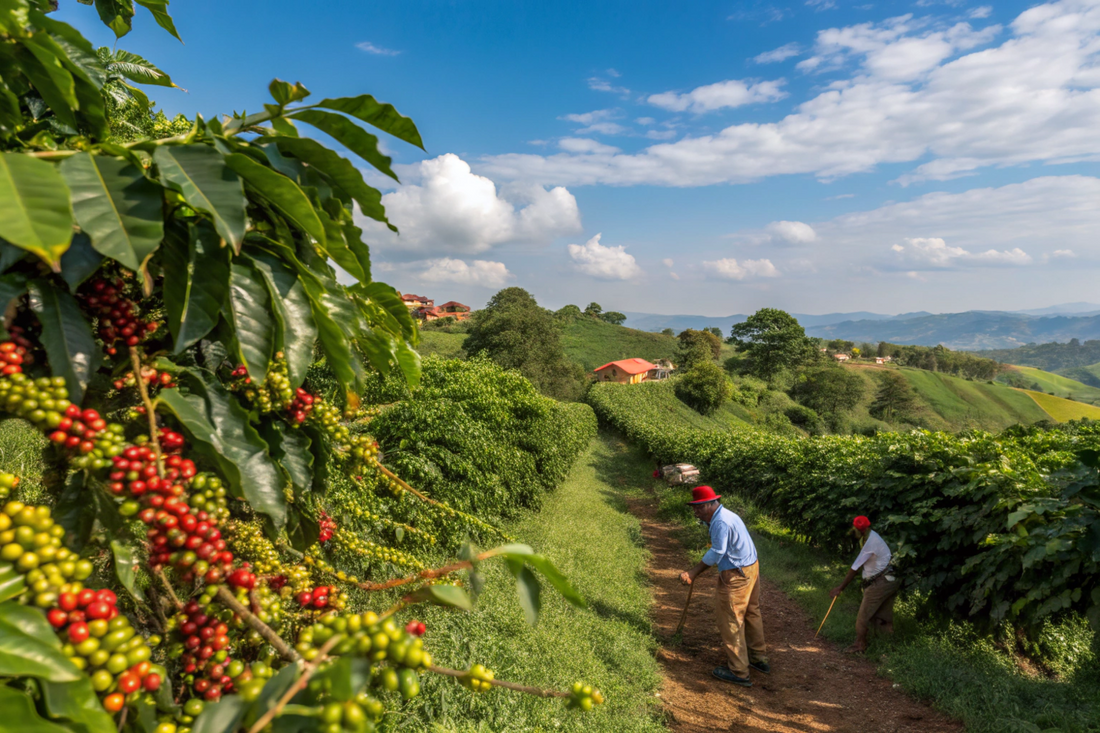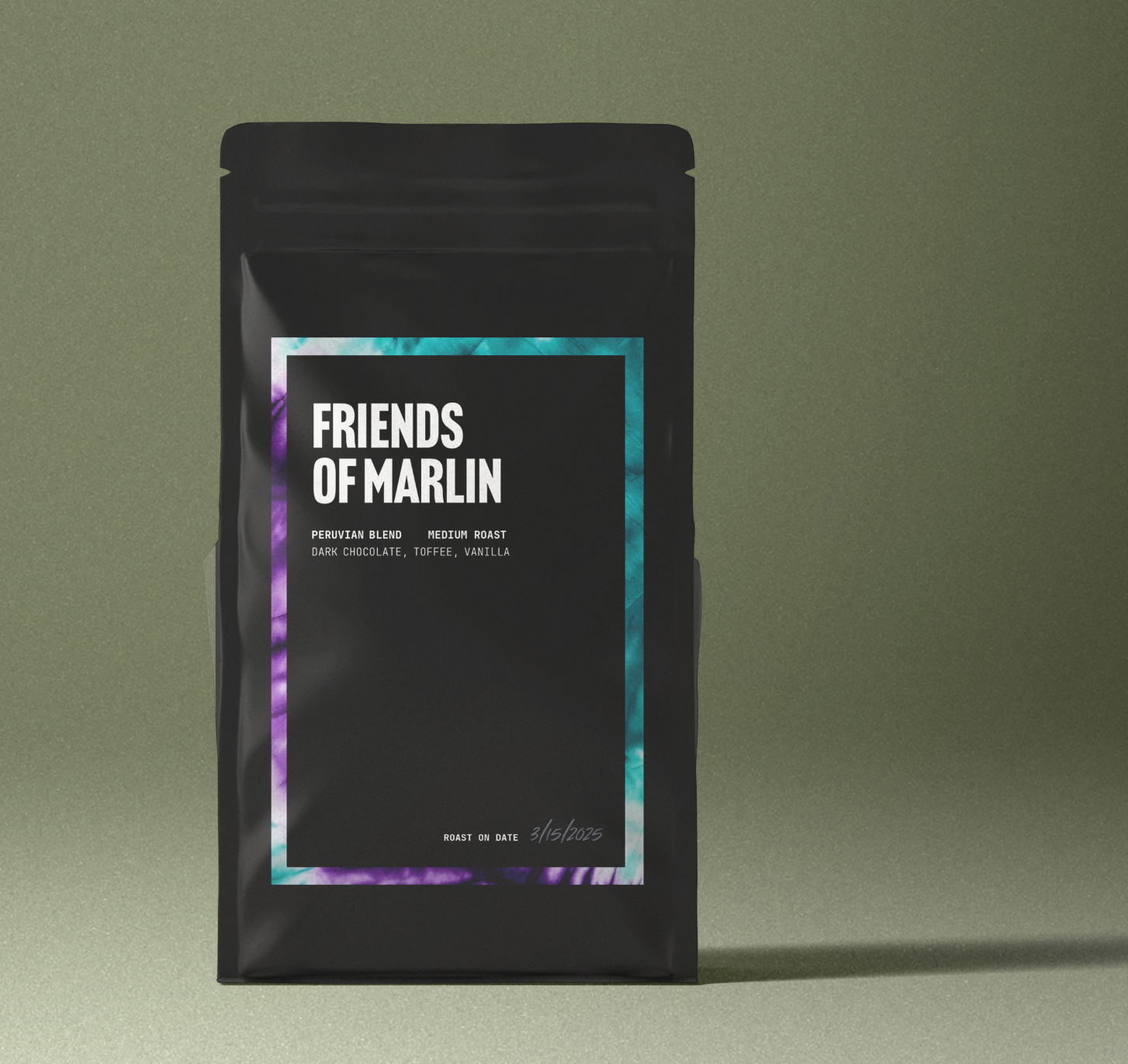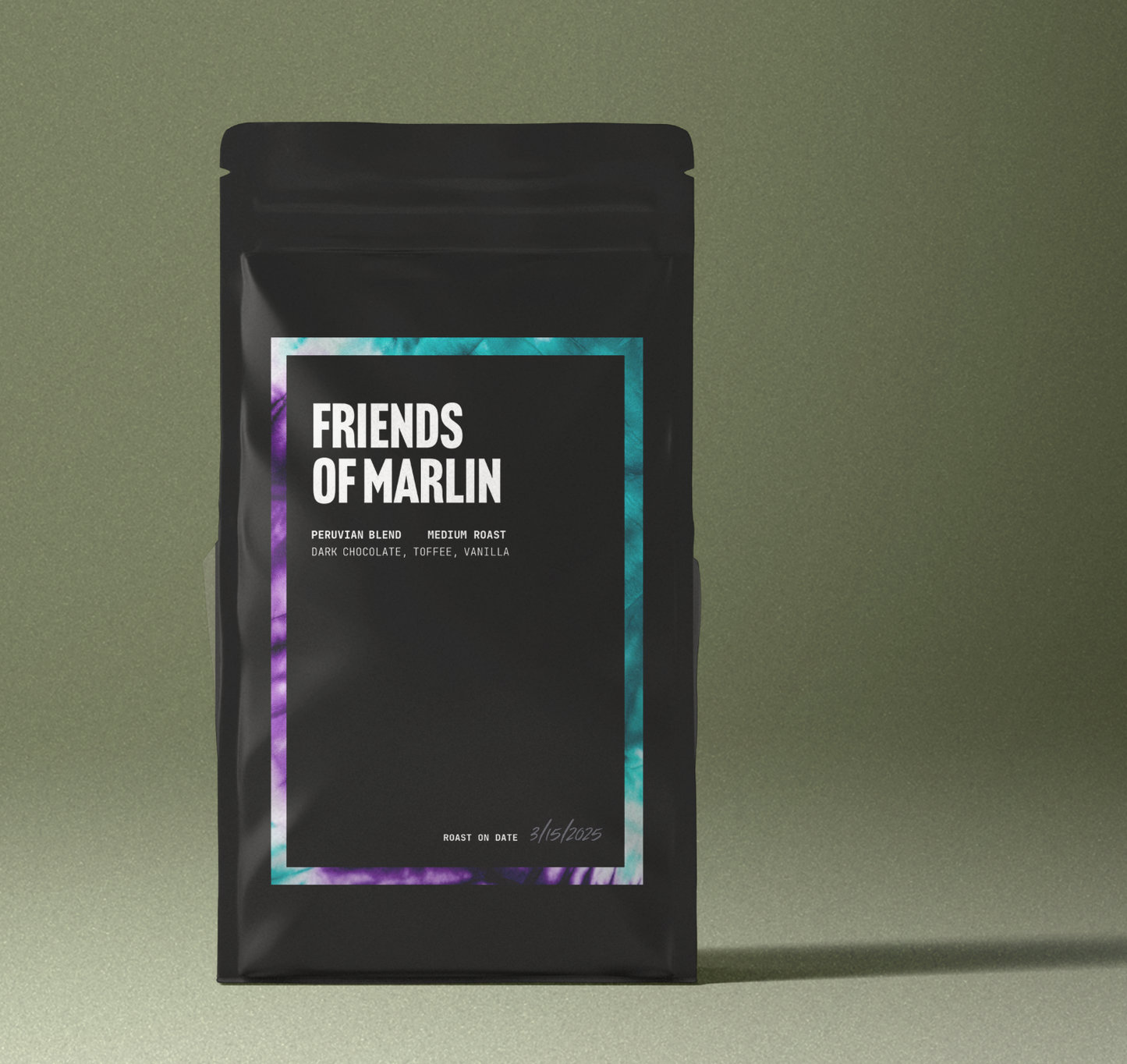
Burundi’s Coffee Regions: Where Bourbon Blooms
Share
1 | A nation stitched together by coffee
Walk through almost any hillside commune in Burundi and you’ll hear the same gentle percussion: the rattle of ripe, red Bourbon cherries tumbling into woven baskets. Coffee is more than a cash crop here; it is the connective tissue between 600 000 smallholder families and the wider world. On barely 28 000 km²—smaller than Maryland—Burundi packs an astonishing range of terroirs whose coffees punch far above their weight on cupping tables from New York to Tokyo.
2 | Terroir in miniature
The country is a high‑altitude amphitheatre. Ridges reach 1 600–2 100 m before plunging into the russet soils of the Rift Valley and the sapphire expanse of Lake Tanganyika. Nights are cool, days are luminous, rainfall is generous and evenly split between two wet seasons. Volcanic loam, abundant iron and a web of natural springs create near‑perfect conditions for Arabica—especially Red Bourbon, the cultivar that rules these slopes.
3 | From colonial plot to specialty darling
Coffee arrived with German colonisers in the early 1900s and was expanded under Belgian rule. After independence in 1962, a state monopoly dictated everything from seedling distribution to export pricing. Liberalisation in the 1990s unlocked private washing‑station investment, and Burundi’s Cup of Excellence debut in 2012 catapulted its top lots onto the global stage.
4 | The smallholder‑washing‑station ecosystem
Average farm size hovers around a quarter hectare—just 200–250 trees per family. Cherries are delivered daily to communal washing stations (known locally as Sogestals) where meticulous flotation, hand‑sorting and double fermentation underpin Burundi’s trademark clarity. Kibingo, Gahahe, Nemba, Heza and Mahonda are now as recognisable to roasters as any single‑estate estate in Latin America.
5 | Awards and rising premiums
Burundian producers have consistently placed in the Cup of Excellence, with auction prices soaring past $30 lb. The programme gives farmers data, feedback and, crucially, direct access to buyers willing to pay quality‑based differentials.
REGIONAL PORTRAITS
6 | Kayanza: the citadel of complexity
Perched on the northern frontier with Rwanda, Kayanza’s ridges rise to 1 900 m and catch mist rolling off the Kibira rainforest. Soils are iron‑rich and slightly acidic; annual rainfall exceeds 1 800 mm. Kibingo station exemplifies the province’s style—sweet black‑tea aromatics, mandarin acidity and a silky body.
Natural and experimental honeys from Heza’s Gitwe Hill layer purple fruit and baking spice over classic florals.
Masha, Buzira and Sehe add watermelon, red currant and cocoa nib to the flavour lexicon.
7 | Ngozi: balance in a bowl‑shaped landscape
Ngozi’s rolling basins sit slightly lower—1 600–1 700 m—but benefit from longer, cooler nights. Fully washed lots from Bugestal’s flagship station deliver crisp malic acidity, red‑grape sweetness and a creamy finish.
Greenco operates a constellation of satellite mills here, pairing agronomy training with seedlings and micro‑credit schemes, a model that has doubled farmer yields in some communes.
8 | Kirundo & Muyinga: the windswept northeast
Closer to Lake Cohoha, these provinces are drier, with savannah breezes that promote slow, even cherry drying on raised beds. Cup profiles skew toward jasmine, hibiscus and pomegranate over a light, tea‑like body—ideal for delicate filter roasts. Though less famous internationally, new private stations in Busoni and Gashoho are experimenting with anaerobic naturals that are winning micro‑lot bids in Japan.
9 | Gitega & Muramvya: the central highlands
At Burundi’s literal heart, altitudes spike again—Mahonda sits at 1 750 m while Murambi stretches to 1 800 m. Mahonda’s Cup‑of‑Excellence‑finalist lots combine crème‑brûlée sweetness, orange‑spice cake and black‑tea tannins.
Murambi delivers kiwi, honeycomb and green apple brightness.
The region’s dense clay soils require careful drainage, prompting stations to build granite‑filtered wells that recycle process water.
10 | Bubanza & Cibitoke: Rift‑edge intensity
On the western escarpment the earth warms faster, creating bigger diurnal swings. Cherries here ripen with thicker mucilage, perfect for fruit‑forward naturals bursting with mango, tamarind and dark chocolate. Although infrastructure is sparse, NGOs have installed solar‑powered drying tunnels that cut defect rates by a third.
11 | Bururi & Rumonge: southern whispers
South of the capital, hills descend toward Lake Tanganyika. Soils lighten, rainfall dips and shade trees are critical. Coffees lean toward stone fruit, brown sugar and a lingering herbal note reminiscent of rooibos. Producers often inter‑crop with banana and macadamia to diversify risk and conserve moisture.
BEYOND PLACE: PROCESS & PROFILE
12 | Washed precision
The classic Burundian double‑fermentation involves 12–18 h dry ferment, a parchment rinse, then 12 h underwater soak before sun‑drying 12–20 days. The result: diamond‑cut clarity, winey acidity and a long, sweet aftertaste.
13 | Naturals, honeys and the rise of experimentation
As global demand for fruit‑bomb naturals grows, stations like Gahahe and Gitwe now segregate day lots, monitor Brix and employ shaded patios to slow drying to 25 days, coaxing blueberry‑jam and rose‑hip notes. Fermented‑honey processes—where mucilage is left intact but parchment is turned in stacked heaps—layer baking spice and purple‑grape complexity.
14 | Flavour by altitude
- 1 500–1 650 m: soft body, brown‑sugar sweetness, hints of plum.
- 1 650–1 850 m: jasmine, red currant, mandarin, black tea.
- 1 850–2 100 m: electric berry acidity, florals, tropical punch and cocoa nib.
CHALLENGES & RESPONSES
15 | Climate volatility and price shocks
In 2024 the FAO recorded a 40 % surge in global coffee prices as erratic rains hit East African output.
Burundi’s producers face compounded risks: hillside erosion, an ageing tree stock and currency fluctuations. Yet climate is not the only threat—political instability, limited fertiliser access and ageing washing‑station equipment also constrain supply.
16 | The Burundi Better Coffee Initiative
Launched in 2023, this five‑year TechnoServe‑led programme aims to reach 60 000 farming families, improve climate resilience through shade‑tree planting and soil‑health workshops, and pilot digital traceability so farmers capture a bigger slice of export premiums.
17 | Gender equity and youth retention
Women perform over 70 % of farm labour but own less than 20 % of land. Washing stations like Nemba now pay women‑led harvesting teams directly via mobile money and reserve leadership roles for top performers. Separately, Ikawa Nziza (“Good Coffee”) youth co‑ops are trialling carbonic‑maceration lots that fetch 300 % more than commodity grades, making coffee a viable career for graduates who might otherwise migrate to Bujumbura.
EXPERIENCE & ENJOYMENT
18 | Visiting the source
Coffee tourism remains nascent but growing. A three‑hour drive from the capital takes you to Kayanza’s Heza station, where visitors can cup day lots beside the quality team, hike misty tea‑and‑coffee trails and share isombe (cassava‑leaf stew) with growers. Many stations offer home‑stays whose fees fund school supplies and health clinics.
19 | Buying Burundian coffee
Look for harvest months (March–July) on retail bags; fresh‑crop Burundi peaks in late autumn for Northern‑Hemisphere drinkers. Seek out station‑specific lots—Kibingo, Gahahe, Mahonda, Nemba—for traceability. Opt for light‑to‑medium roasts that preserve floral aromatics. For filter, start at 1:16 brew ratio, 94 °C water, 3 min total contact; for espresso, 1:2.4 ratio, 25–28 s, and lower brew temp (91 °C) to tame acidity.
20 | Pairing notes
Washed lots sing with citrus‑forward desserts (think lemon tart) or goat‑cheese salads. Naturals match well with 70 % dark chocolate or aged Gouda. Honey‑processed coffees shine alongside cardamom‑spiced pastries.
HORIZON SCANNING
21 | Innovation pipeline
Expect more controlled yeast inoculations, vacuum‑sealed “wine‑style” fermentation tanks and solar‑hybrid dryers that reduce carbon footprints. Government policy is pivoting toward specialty: a 2025 bill proposes tax holidays for stations achieving SCA scores above 86.
22 | Closing thoughts
Burundi’s story is one of outsized ambition packed into a pocket‑sized nation. From Kayanza’s towering ridges to the lake‑cooled slopes of Rumonge, each region stamps its own dialect on the universal language of Red Bourbon. Challenges remain, but every washed, honey or natural lot that dazzles on your palate is proof that resilience—and remarkable flavour—still take root in Burundi’s red earth. Drink deeply, and you taste not just coffee but the heartbeat of an entire country.

